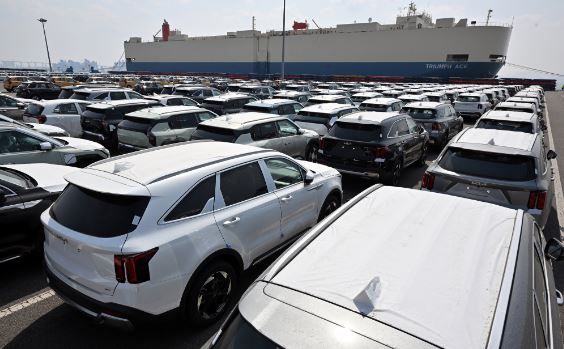Hyundai Glovis turns to China for contracts on impending U.S. tariffs on car carriers

By Alimat Aliyeva
Hyundai Glovis is ramping up efforts to secure long-term shipping contracts with Chinese automakers in response to a U.S. tariff set to take effect in October, which threatens to undercut its car carrier profitability, Azernews reports.
Beginning on October 14, the Office of the United States Trade Representative will impose a port entry fee of $150 per car equivalent unit (CEU) on car carriers not built in the United States. For a typical 6,500 CEU vessel, this amounts to $975,000 per entry.
Only one of the world's carriers was built in the United States, highlighting the disproportionate burden the forthcoming U.S. maritime policy changes will impose on foreign operators, the Financial Times (FT) reported Tuesday. With only one U.S.-built vessel in the mix, 769 ships will fall under the new tariff.
FT estimates that of the 29 million vehicles transported globally last year, roughly 4.6 million were destined for the United States. This volume could translate into an additional $1.8 billion in annual fees for the car shipping industry.
Hyundai Glovis, which operates 97 car carriers—35 owned and 62 chartered—is not immune to the impact. The company, along with Japanese players NYK Line, MOL, and "K" Line, as well as European operator Wallenius Wilhelmsen Ocean, holds a dominant share of the global car shipping market.
In the first quarter of this year, Hyundai Glovis reported 7.22 trillion won ($5.2 billion) in revenue, with 1.01 trillion won coming from its car carrier business, accounting for 13.9 percent of the total.
Routes to and from the United States made up 34 percent of its car shipping volume in 2023. The company is the exclusive transporter for Hyundai Motor and Kia’s exports to the United States, and the new tariff is expected to weigh heavily on its margins.
To offset potential losses, Hyundai Glovis is focusing on securing long-term contracts with other automakers, particularly those in China. During an earnings call on April 30, the company noted increased engagement with Chinese automakers like Zeekr and Li Auto.
“Chinese carmakers are expanding globally, as seen at the Shanghai Auto Show. We are in direct talks with several companies,” a Glovis official said. “Most contracts from Chinese companies are short-term, but we’re working toward signing deals lasting more than a year.”
Data from the China Passenger Car Association shows that Chinese car exports rose 22.8 percent year-on-year to 6.41 million units in 2024, mainly driven by demand in Europe, the Middle East, and Southeast Asia. Hyundai Glovis aims to secure part of that shipping volume to mitigate losses from the U.S. tariffs.
A total of 16.5 percent of Hyundai Glovis’ car carrier operations originated in China during the first quarter of this year, up from 12 percent in the fourth quarter of last year.
Analysts attribute the increase in part to a memorandum of understanding signed with Chinese electric vehicle maker BYD in September 2024 to share vessel capacity.
Still, industry experts remain cautious. Hyundai Glovis needs long-term contracts to ensure stable returns, but many Chinese automakers rely on spot contracts and short-term bidding to meet fluctuating logistics needs.
“Chinese automakers are likely to prioritize domestic shipping firms as part of their industrial policy,” said Kwon Yong-joo, a professor of automotive transportation design at Kookmin University. “That means Glovis may find it difficult to significantly expand its share of the Chinese market.”
The rise of electric vehicles (EVs) and the global shift toward sustainable transportation are also influencing the car shipping industry. As China is a major hub for EV production, Hyundai Glovis could further strengthen its position by capitalizing on the growing demand for EVs in markets like Europe and the Middle East. The company’s collaboration with Chinese automakers, especially in the electric vehicle sector, could be a crucial factor in its strategy to navigate the challenges posed by the U.S. tariffs and to diversify its revenue streams.
Here we are to serve you with news right now. It does not cost much, but worth your attention.
Choose to support open, independent, quality journalism and subscribe on a monthly basis.
By subscribing to our online newspaper, you can have full digital access to all news, analysis, and much more.
You can also follow AzerNEWS on Twitter @AzerNewsAz or Facebook @AzerNewsNewspaper
Thank you!
